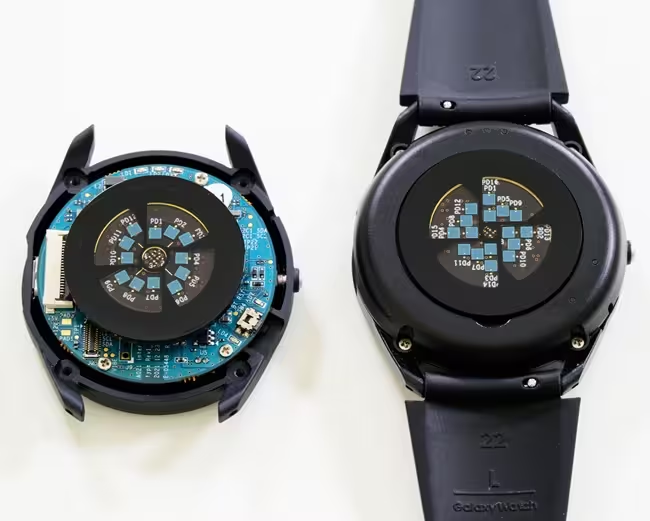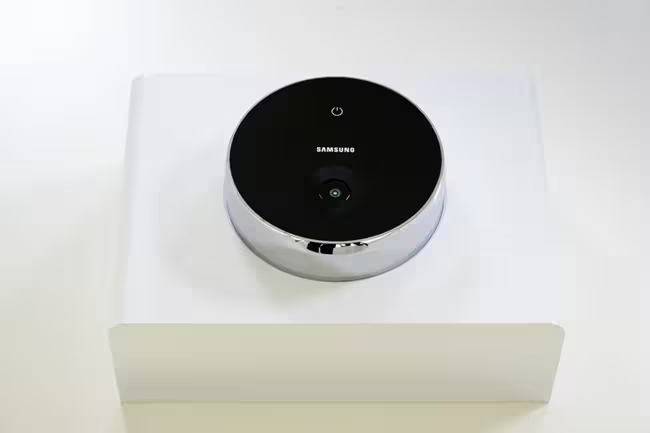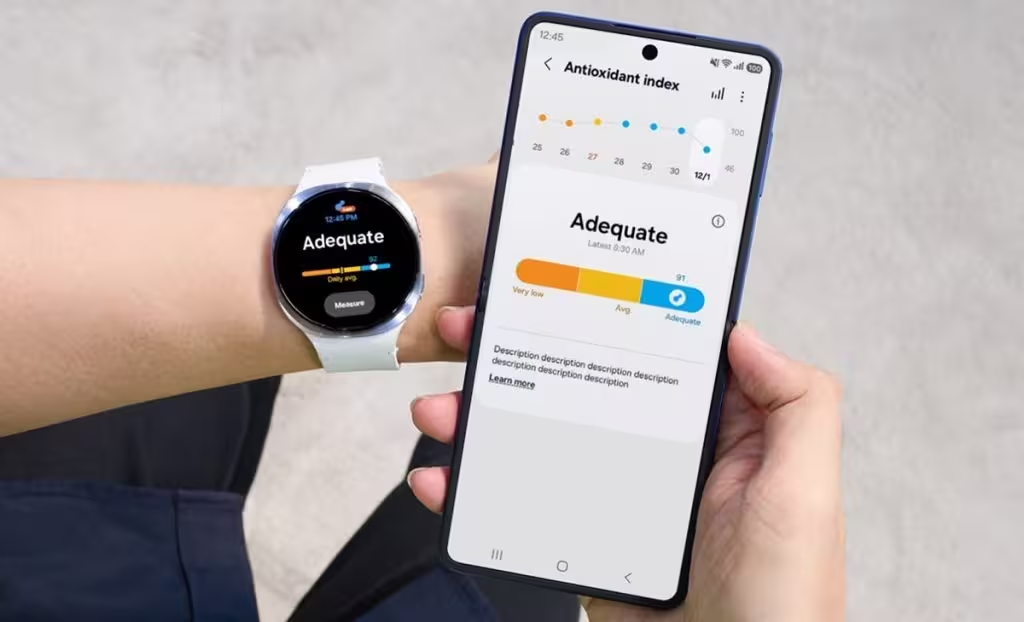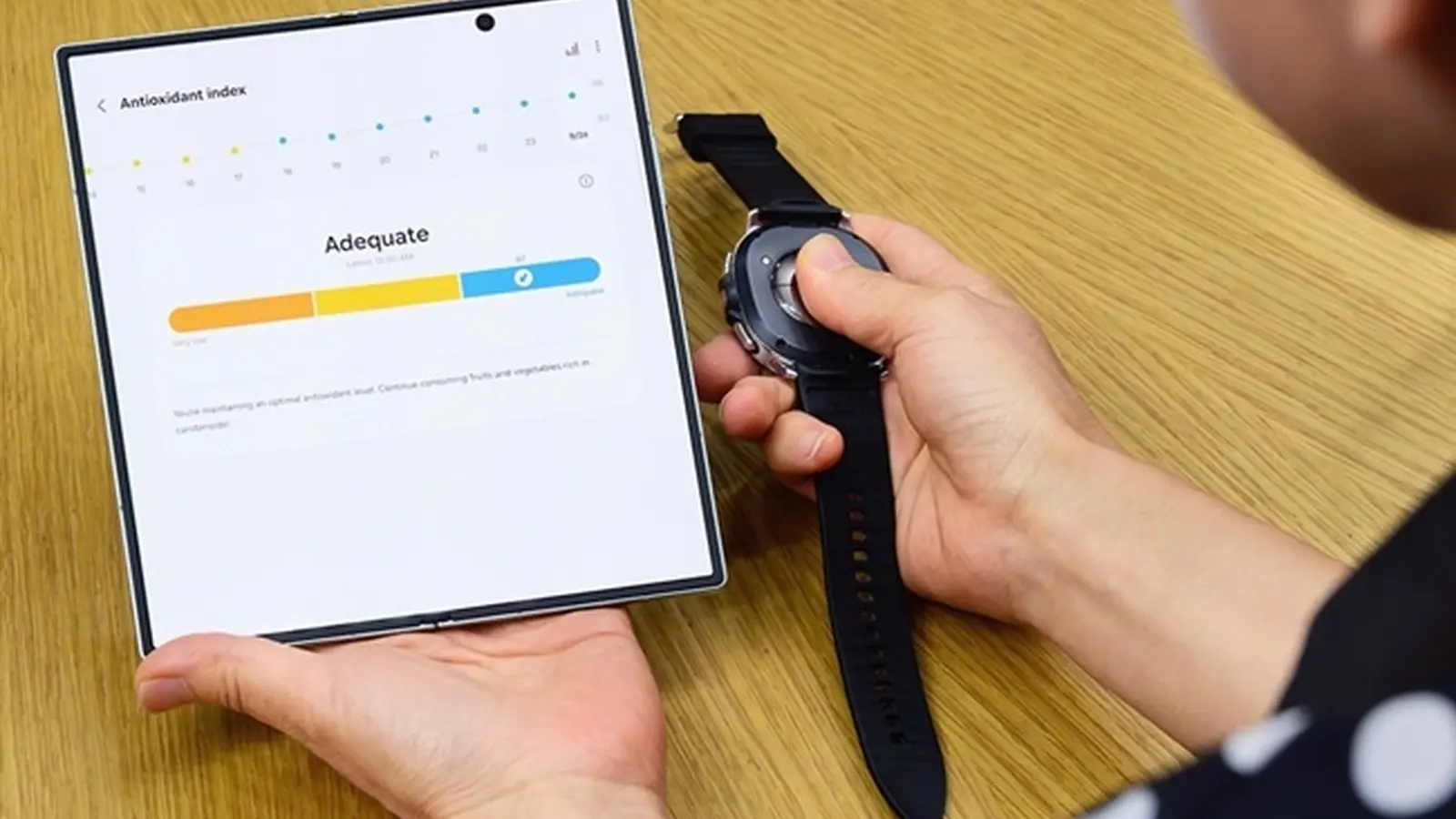3 Minutes
Samsung has pushed wearables into a new frontier: real-time nutrition tracking. The company has added an Antioxidant Index to Galaxy watches that reads carotenoid levels from a simple fingertip scan — and it delivers a result in roughly five seconds.
A lab-grade sensor, shrunk to wrist size
Measuring antioxidants used to require bulky Raman spectroscopy equipment and clinic visits. Samsung spent years miniaturizing that lab-grade tech into a coin-sized sensor that fits inside a watch. By combining multi-wavelength LEDs with photodetector arrays and reflectance spectroscopy, the device captures skin carotenoid signals and converts them into an easy-to-understand score.

Behind the scenes are advanced calibration algorithms that continuously adjust readings for each user. Jinyoung Park from Samsung’s Digital Health team framed the challenge simply: keep clinical accuracy while stripping away the bulk. The result is a compact sensor that, paired with software, delivers personalized data in seconds.
Why carotenoids matter — and what the Antioxidant Index tells you
Carotenoids are pigments found in many fruits and vegetables. Their concentration in the skin is a reliable indicator of recent produce intake and links to long-term health outcomes. Samsung’s Antioxidant Index translates fingertip measurements into three categories: very low, low, and optimal.

Because skin carotenoids accumulate over time, meaningful changes typically appear after one to two weeks of consistent dietary change. The index isn’t just about food: sleep, stress and activity levels also influence results, so the metric works best as part of a broader wellness picture.
How to use it (fast and simple)
- Place your fingertip on the watch sensor for about five seconds.
- Get an immediate carotenoid reading labeled very low, low, or optimal.
- Track trends over time and combine the score with sleep and activity data for fuller context.
Designed for accuracy across diverse users
Skin tone and blood flow can skew optical readings. Samsung addressed that by scanning the fingertip — an area with minimal melanin — and applying gentle pressure to reduce hemoglobin interference. Clinical trials at Samsung Medical Center, involving hundreds of participants, validated the approach across a wide range of users.

Public health nutrition expert Dr. Hyojee Joung of Seoul National University helped translate antioxidant science into wearable-friendly metrics, while Professor Yoonho Choi emphasized the potential: regular tracking of fruit and vegetable intake through a wearable could support healthier aging and lower chronic disease risk.
Where you can find the feature
The Antioxidant Index debuted with the Galaxy Watch8’s research and development, but the feature is available on the Galaxy Watch Ultra and subsequent Galaxy Watch models released afterward. It’s an example of how wearables are evolving from activity trackers into tools that measure more nuanced, clinically relevant health signals.
Imagine getting a quick read on how your latest week of meals — and your sleep schedule — are adding up to long-term health. That’s the promise Samsung is pitching: nutrition data you can actually act on, right from your wrist.
Source: fonearena


Leave a Comment